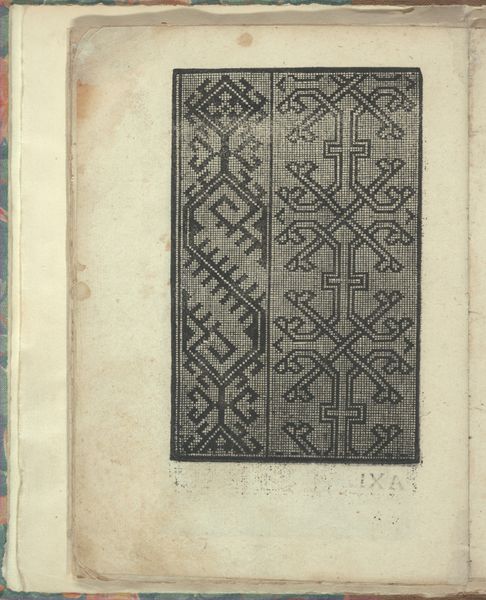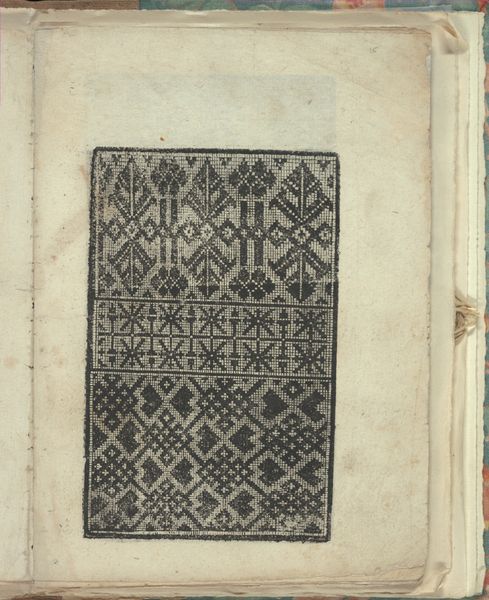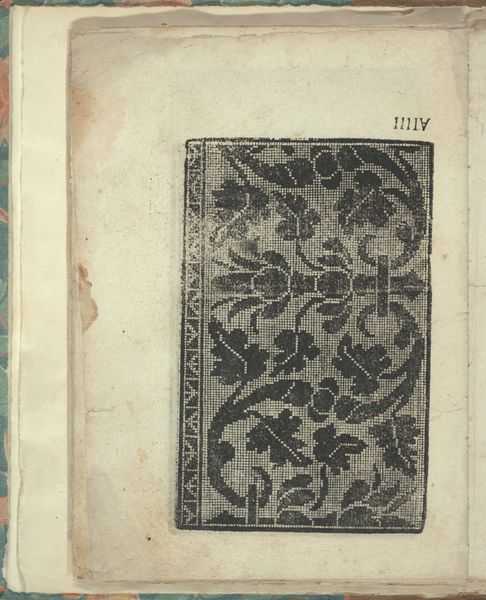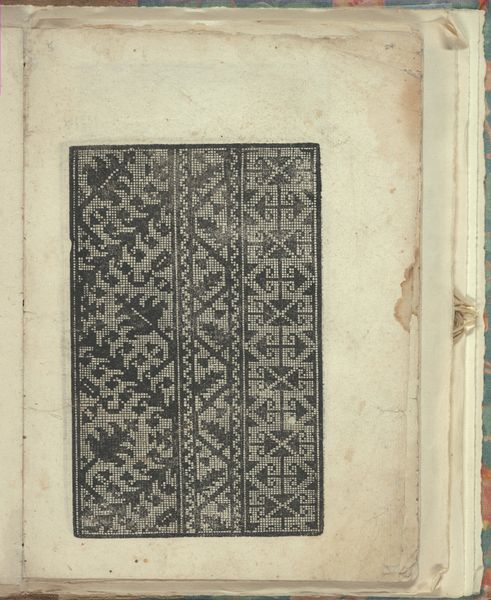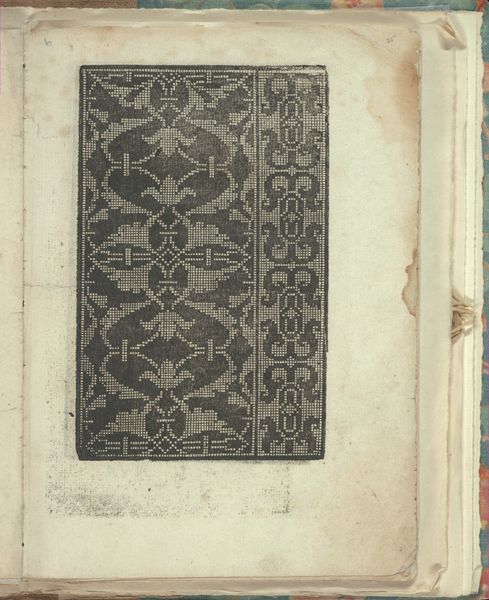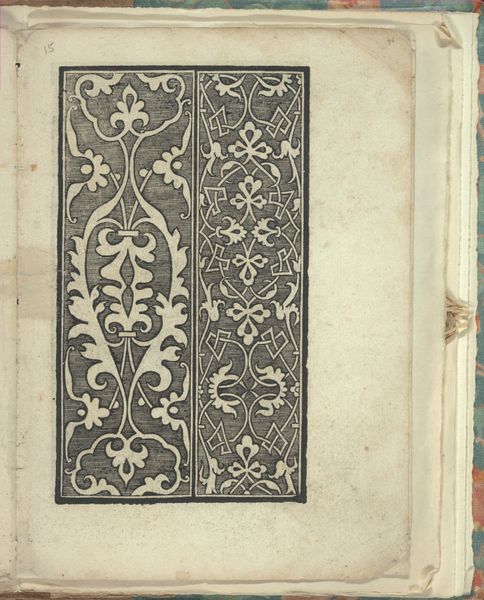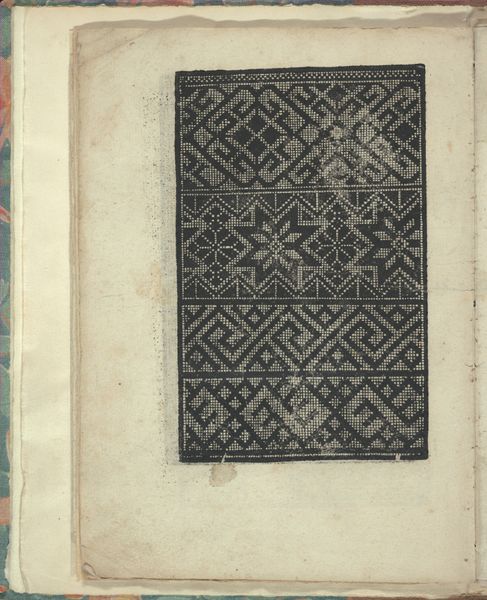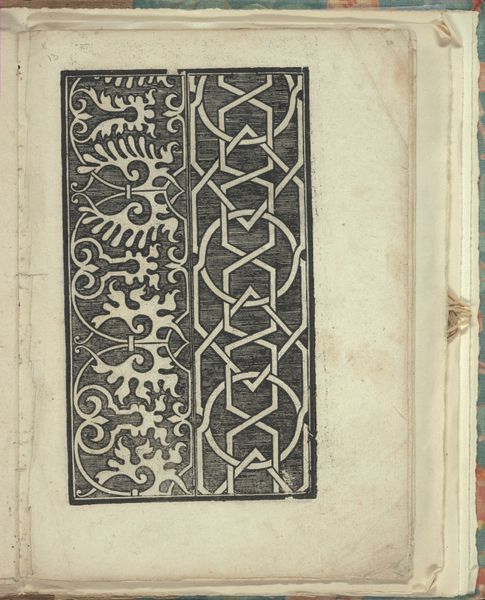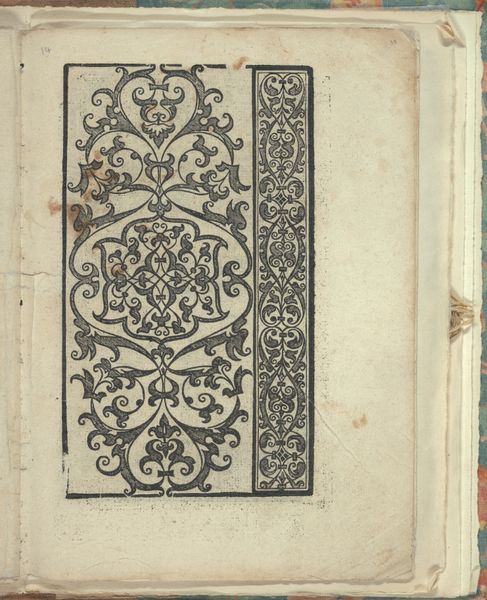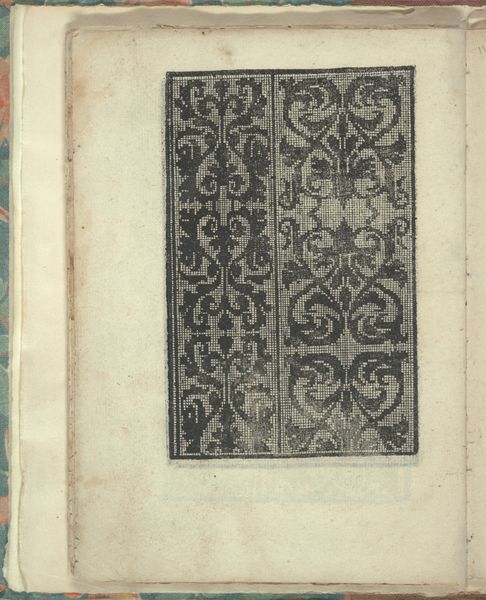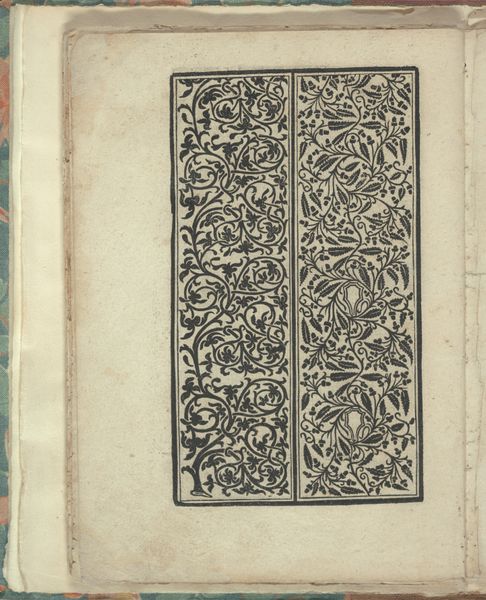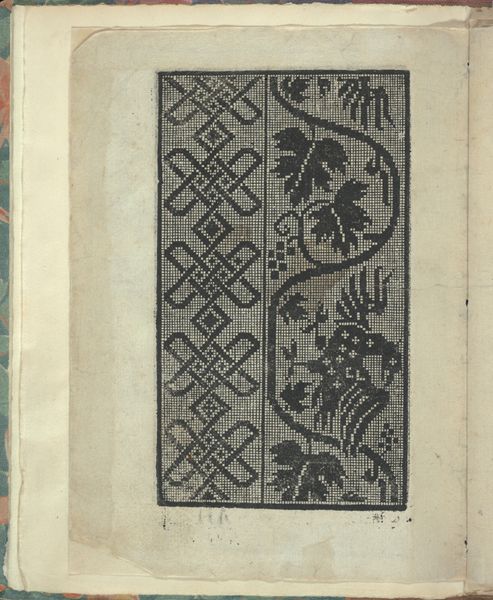
Opera Nova Universali intitulata Corona di racammi, page 16 (verso) 1530
0:00
0:00
drawing, graphic-art, print
#
drawing
#
graphic-art
#
aged paper
#
toned paper
# print
#
book
#
flower
#
11_renaissance
#
personal sketchbook
#
decorative-art
#
sketchbook art
Dimensions: Overall: 8 7/8 x 6 7/8 in. (22.5 x 17.5 cm)
Copyright: Public Domain
Curator: Here we have a page from Giovanni Andrea Vavassore’s “Opera Nova Universali intitulata Corona di racammi,” printed in 1530. It resides now in the Metropolitan Museum of Art's collection. Editor: It strikes me as stark. The contrast between the dense, black pattern and the aged, cream-colored paper creates an immediate impression of something old and elemental. Curator: This book was designed as a pattern book for embroidery, primarily for women. So, while it may seem purely decorative, it represents a key aspect of women's labor and creativity during the Renaissance. Editor: I see the individual motifs—floral, geometrical—arranged in bands. They are like ancestral memories embedded in the very structure of the design, aren’t they? Each generation reinterpreting and passing down symbolic forms. Curator: Exactly! These pattern books circulated widely and were tools through which women gained agency, becoming arbiters of style and contributing to the visual culture of the time, within the confines of their expected roles. It represents the domestic sphere intersecting with wider economic and cultural trends. Editor: It's amazing how this single page can hold so much, it's dense. I wonder if people using this book thought about the symbolism behind all those designs they repeated by hand. I can imagine a needleworker pondering the nature of beauty while recreating those shapes. It bridges high design and the domestic labor and social identity. Curator: The distribution of the books and their use is interesting considering women's varying literacy levels in the 16th century, prompting reflection on accessibility to new designs and artistic autonomy within a hierarchical society. Editor: Looking at this aged page makes me consider how visual information traveled through society and it challenges the perceived divide between decorative and so called "fine arts" . I find myself captivated by this intersection between symbolic systems, social expectations and human imagination. Curator: Agreed! Considering those intersections challenges and deepens the visual experience when viewing an historical artwork such as this print.
Comments
No comments
Be the first to comment and join the conversation on the ultimate creative platform.
